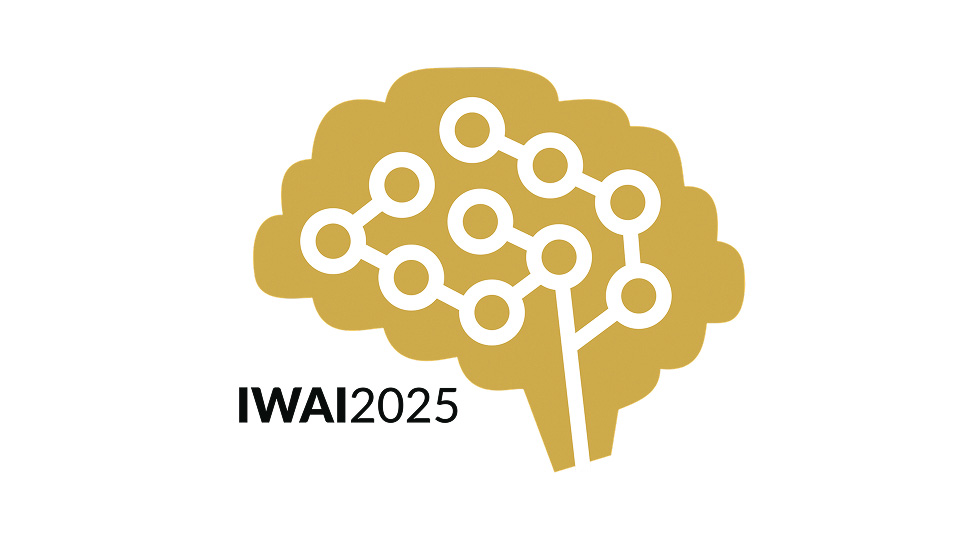4 min read
🤖 Robots that don’t need to be trained? 🧠 A digital brain? 😊 Agents that can infer emotions?
Rob Blackie : Oct 15, 2025 11:07:17 AM

🤖 Robots that don’t need to be trained? 🧠 A digital brain? 😊 Agents that can infer emotions?
All of these are covered by peer-reviewed papers/posters that VERSIANS are presenting this week at the International Workshop on Active Inference (IWAI) conference in Montréal, Quebec, Canada.
VERSES is so proud of our researchers whose papers have been selected for this prestigious conference. You will find a brief summary and links to the papers being showcased at IWAI below. Congratulations to VERSES Research team!
Mobile Manipulation with Active Inference for Long-Horizon Rearrangement Tasks
by Corrado Pezzato, Ozan Catal, Toon Van de Maele, Riddhi J. Pitliya, Tim Verbelen
This paper applies VERSES technologies to robots - showing how they can outperform benchmarks without the need for pre-training. Further details of our robotics work can be found at:
🔗 Mobile Manipulation with Active Inference for Long-Horizon Rearrangement Tasks
Related: VERSES® Unveils Robotics Architecture that Works Without Pre-Training
The cost of changing your mind
by David Hyland & Mahault Albarracin
It takes effort to move beliefs aside, because we are motivated to keep them, for social or ecological reasons. But we can be moved away from these beliefs if we are slowly nudged away rather than try to go straight to the new belief. In fact you expend less energy if you go the long way around.
🔗 The cost of changing your mind
Hyperscanning under Active Inference
by Nicolás Hinrichs, Mahault Albarracin, Dimitris Bolis, Yuyue Jiang, Leonardo Christov-Moore, Leonhard Schilbach
This paper uses a hyper-scanning method (a way to see how two people are connected via EEG) to understand how the brain works when people interact, for instance talking to each other or cooperating. Translating this into mathematical approaches may help us to create agents which interact more effectively with humans.
🔗 Hyperscanning under Active Inference
Theory of Mind Using Active Inference: A Framework for Multi-Agent Cooperation
by Riddhi J. Pitliya, Ozan Catal, Toon Van de Maele, Corrado Pezzato, Tim Verbelen
How can an agent infer beliefs in a human-like way by observing their behaviour without needing to communicate? Humans use this to, for instance, avoid bumping into each other on the street by predicting what the other person would do if I were them, and then plan our own strategy accordingly. Theory of mind will allow agents to work together more efficiently.
🔗 Theory of Mind Using Active Inference: A Framework for Multi-Agent Cooperation
Bethe Predictive Coding
by Magnus Koudahl, Alexander Tschantz, Tommaso Salvatori, Hampus Linander, Lancelot Da Costa, Jeff Beck, Christopher Buckley
Predictive Coding is an influential theory about brain function that has recently been applied to train neural networks. This paper presents new results that unify predictive coding and message passing. By doing this, we are able to quickly train small neural networks.
Diffusion-Generated Latent Spaces for Continuous Amortized Active Inference Agents: A Mathematical Framework
by Zahra Sheikhbahaee, Adam Safron, Dalton A R Sakthivadivel, Mahault Albarracin, Irina Rish
This paper proposes a new way for active-inference agents to represent uncertainty. So instead of describing beliefs with a fixed formula (like a Gaussian), the agent learns to generate its beliefs through a reverse diffusion process which is the same kind of process used in image generation models like Stable Diffusion.
Resilience and adaptability in self-evidencing systems
by Dalton Sakthivadivel, Mahault Albarracin
This paper explains what constitutes the identity of a system even though it changes through a mathematical approach. This has implications for Domains (HSML) for example, which may have porosity but could still remain semantically identifiable.
🔗 Resilience and adaptability in self-evidencing systems
A Hardware-oriented Approach for Efficient Active Inference Computation and Deployment
by N. Pizurica, N. Milovic, I. Jovancevic, C. Heins, and M. de Prado
In the past it has been challenging to deploy active inference on edge devices. We have combined Python's flexibility and optimized computational graphs to address this problem. Tested on an Nvidia Jetson, our method runs over twice as fast, and uses 35 % less memory than existing approaches. This will allow adaptive and autonomous to be deployed directly on the edge.
🔗 A Hardware-oriented Approach for Efficient Active Inference Computation and Deployment
Performing Active Inference with Explainable Tensor Networks
by Philip Wilson
In this work, we encode the generative model of an active inference agent into a quantum state. This quantum state is represented efficiently and transparently in a Tensor Network. This opens up the possibility of running our models on quantum computers, with their unique advantages.
🔗 Performing Active Inference with Explainable Tensor Networks
Updating ActiveInference.jl: Modularity and Ease of Use for Active Inference Models Beyond the Discrete POMDP
by Peter Thestrup Waade, John C. Boik, Jonathan Ehrenreich Laursen, Samuel William Nehrer, Dominik Firisz, Chris Mathys
The active inference framework has been used across domains, including theoretical modelling, machine learning, and applied cognitive modelling. Our work on the Julia package ActiveInference.jl, reported here, is aimed at improving software tools. These are designed to be 1) flexible; 2) have a simple API, 3) be easy to customize for diverse contexts; and 4) have a code base that is readable and modular enough for the community to extend.
🔗 Use for Active Inference Models Beyond the Discrete POMDP
Bayesian Structure Learning for Scalable Active Inference
by Lancelot Da Costa
This paper proposes how AI agents should discover how to understand their world by themselves, like figuring out the rules of a game while playing it, rather than using pre-programmed models. These agents would actively explore and experiment to build better mental models, constantly asking "what's really going on here?'' to improve their understanding.
🔗 Bayesian Structure Learning for Scalable Active Inference
AXIOM: Learning to Play Games in Minutes with Expanding Object-Centric Models
by Conor Heins, Toon Van de Maele, Alexander Tschantz, Hampus Linander, Dimitrije Markovic, Tommaso Salvatori, Corrado Pezzato, Ozan Catal, Ran Wei, Magnus Koudahl, Marco Perin, Karl Friston, Tim Verbelen, Christopher L Buckley
This paper provides more details on the AXIOM 'digital brain'. This is based on Active Inference and has demonstrated superior performance over Google DeepMind’s DreamerV3, a leading model recognized for its generalization capabilities in game environments.
🔗 AXIOM: Learning to Play Games in Minutes with Expanding Object-Centric Models
Related: VERSES® Digital Brain Beats Google’s Top AI At “Gameworld 10k” Atari Challenge
%20Attendance.jpg)

